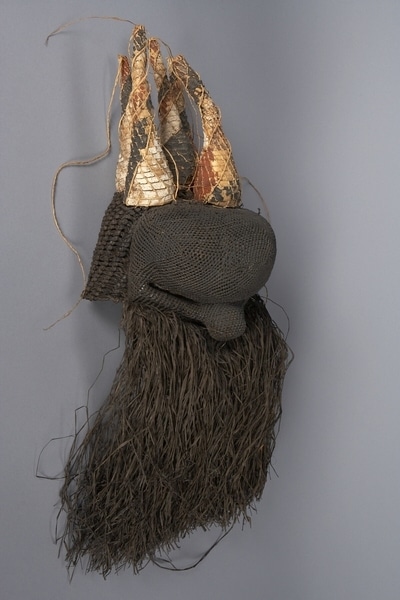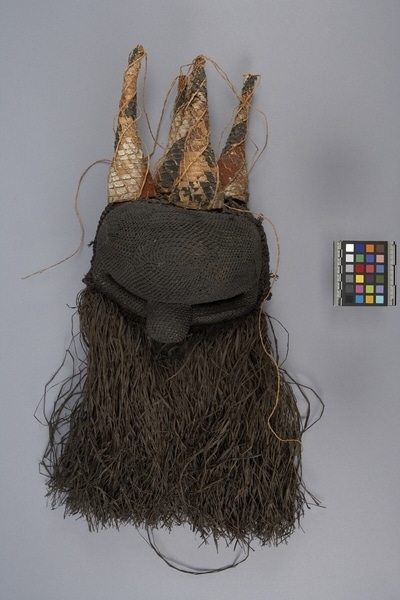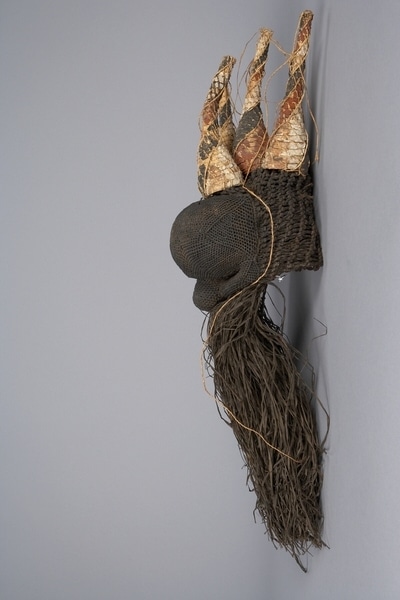Mask Item Number: 938/1 from the MOA: University of British Columbia




Description
Dark-brown woven mask with bulbous nose, bushy beard, and five cone-like projections on top of the head that are decorated with red, black, and white clay. The back of the mask has large woven cables in diagonal rows. The front of the mask has tightly woven cables in triangular patterns.
History Of Use
Mungongo (warrior) society mask. The primary function of these masks was to differentiate and signify the titles of mungongo warriors. In order to gain the right to wear a mask, a warrior has to perform tasks. These tasks consist of paying each mungongo member who has a mask and then paying for their initiation into the particular mask society. In addition to gaining membership into the society, this also symbolized the individual's economic status. There is no limit to how many masks a society member can buy; the more masks one can wear, the more successful and economically influential they are. At his funeral, all the masks that the warrior had would be danced. The dancers would also receive a portion of the deceased's wealth. After death, if a warrior had many masks it showed that they had knowledge and the power to control destiny. There are two types of warrior masks, those that can only be worn by any warrior and ones that can only be worn by "homicides" (people who have killed in battle). Warrior masks include nkunubo, mukungu, nkile, sakasiya, and tubebebe. Homicide masks are called mukinka, nabadi, sakuibuku, sebamba, idangani, and ibuku. People who are not entitled to see homicide masks were said to die mysteriously in fires. The only time someone can see a homicide mask, without consequence, is at a funeral; however, they do need to pay a fee.
Item History
- Made in Democratic Republic of the Congo ?
- Owned by Marjorie Murray before January 18, 1984
- Received from Marjorie Murray (Donor) on January 18, 1984
What
Who
- Culture
- Central African
- Previous Owner
- Marjorie Murray
- Received from
- Marjorie Murray (Donor)
Where
- Holding Institution
- MOA: University of British Columbia
- Made in
- Democratic Republic of the Congo ?
When
- Ownership Date
- before January 18, 1984
- Acquisition Date
- on January 18, 1984
Other
- Condition
- poor
- Accession Number
- 0938/0001